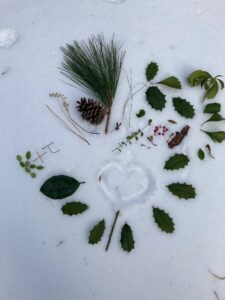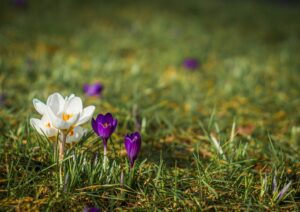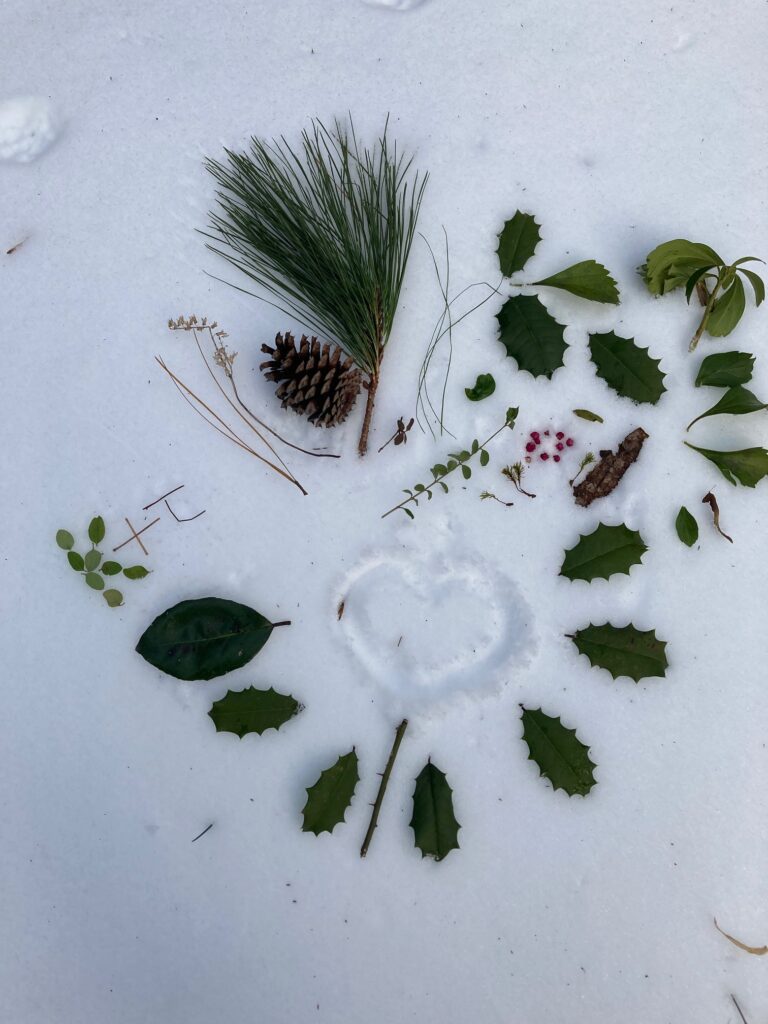
The winter mandala, above, is poignant in its simplicity and purity. It reflects the nature of the people who created it on a whim, in the midst of a snowy afternoon exploration ~ my grandchildren. Here we see an elegant representation of the child’s innate consciousness which aligns intimately with the worldview of many earth cultures. We see the primordial circle which we find at worldwide sites ~ Stonehenge, the Plains Indian’s Medicine Wheel, in cave art, etched into petroglyphs, and in many traditions’ use of mandalas. The circle is eternal and represents the nature of birth, death and regeneration; the circle of sky and horizon; the family, clan, community; the whirling cosmos. In the center of this primal winter circle we find the human heart. Humans thrive when our hearts are held within nesting circles of love. The family, the natural world, the community, the world of Spirit.[i] My grandchildren created these inborn symbols within another primordial circle, the circle of beauty that has enfolded humanity since our ancient ancestors painted vibrant living images on the cave walls at Lascaux.
Every aspect of our humanity has been bequeathed to us by our most ancient relatives: the more-than-human community that evolved over millennia. Our bones are the gift of the minerals that make and move mountains. Our lungs, brains, veins and nervous systems reiterate the structures of the plant realm. The fire in our mitochondria is bequeathed by the fire of the stars and that in the belly of the earth. The air we breathe is created by an eternal symbiotic dance in which we partner with the plants, trees, and plankton.
These circles of connection ask us to inquire, also, into the circular nature of language. What circle do the words soil and soul occupy together? We can explore these linguistic relationships through the time-honored tool of Story
Two Stories of the Soil
Undisturbed soils (old growth forests, intact grasslands) are communities composed of bacteria, soil organisms, mycellial networks and legions of other living beings that have thrived in cooperative evolution for millennia. They are perfectly adapted to their environments and are capable of further adaptation to changing environmental factors. We are now learning that many of these communities are in fact “super-organisms” and operate in a fashion similar to our own bodies. Like the soil, we are composed of immeasurable systems and cells, all working synchronistically toward the well-being of the whole. Our bodies contain more “non-human” cells than human ones, thus we thrive! These living systems collaborate into the miracle we call “I.” We are formed by the same principles that formed the body of the earth, and of the soil: intelligence, communication, collaboration. We and all life evolve through interwoven patterns of relationship.
Earth-based cultures the world over have always known the twin-relationship between the soil and the soul, the land and her people. “From Wakan Tanka, the Great Spirit, there came a great unifying force that flowed in and through all things, the flowers of the plains, blowing wind, rocks, trees, birds, animals and was the same force that had been breathed into the first human. Thus all things were kindred, and were brought together by the same Great Mystery.” (Luther Standing Bear)[ii] This story of oneness is the golden thread, the unifying force, that runs through all native worldviews. It has held humanity and the earth in balance for millennia.
Today’s dominant paradigm teaches a very different story, though, that of competition, winners and losers, scarcity. The myth of inferiority and superiority ranks humans as superior, with all other earthlings rating far below. This myth trains us to believe that the soil, being regarded as the furthest “down,” is not a living community of cooperative, co-creative entities. Rather, that soil is fundamentally inert, deficient, rocky, depleted. Stones must be removed and the plow applied, soil amendments and chemical fertilizer added, insecticides applied. Fields must be measured, regularized and monetized. In our hubris, we think we can create a perfect soil, yet we create the soil in our own distorted image. We envision soil as inferior and in need of improvement, when in fact is it our destructive agricultural practices that continue to create these very conditions, and thereby erode the very foundation of our life.
Two Stories of the Soul
This disregard of the spirit of the soil parallels a 20th century belief that newborn humans also arrive “blank,” unfeeling and unaware. Like faulty agricultural practices, this attitude toward infants and young children lays the foundation for a continuing erosion of the child’s soul.
Again, because of this destructive myth which the dominant paradigm preaches, children can grow to feel ineffective, damaged, insufficient, incapable. This narrative tells of humans pitted against not only the presumed savagery of the natural world, but also against each other. Our educational system reinforces this sense of scarcity, of not being enough,by fostering academic competition that pits child against child. This has profound effects for the child’s future; even many “successful” people secretly feel they are fraudulent and unworthy. In this way they fear that others come to know them deeply. Some people protect themselves from these negative self-perceptions by egoism or overblown self-importance, others by withdrawal into depression, alienation or the virtual world.
These false perceptions have been planted in childhood by what Charles Eisenstein calls the Story of Separation. This assumption of competition as the underlying human motivation has been capitalized upon by the commercial culture, marketing corporations, social media and other tools of control. Marketing firms use terms of war, when planning strategies targeted at child-consumers. They preach that the child’s worth is valued by their possession of stuff. All this artificiality poisons the soul as clearly as chemical fertilizers and pesticides poison the soil.
Science, though, is beginning to affirm the more ancient story of relationship: we now know the child’s perceptions, feelings and intelligence ~their soul~ begins to form in-utero and continues to be a work-in-progress that is shaped by relational experiences with parents, family, schools, society, the natural world and the world of Spirit.
These thoughts circle us back to the simplicity and purity of the children’s winter mandala. The foundational need of the soul is for intricate and intimate relationship. This mirrors the primal relationship-principle we see operating in living soil.
Excerpted from my Substack https://sharifaoppenheimer.substack.com
[i] Subscribe here, for a deeper exploration of nesting circles of love. https://www.sharifaoppenheimer.org
[ii] https://www.covenantpathways.org/the-arrow-that-was-heard-around-the-world/
And here is a well-beloved Waldorf Candlemas poem, for your children:
A little brown bulb went to sleep underground,
In his little brown nightshirt he slept very sound.
Old Winter, her roared and he raged overhead,
But the little brown bulb did not budge in his bed.
When Springtime came tiptoeing over the lee,
With fingers to lips, as soft as can be,
The little brown bulb just lifted his head,
Slipped off his nightshirt and Jumped Out of Bed!

